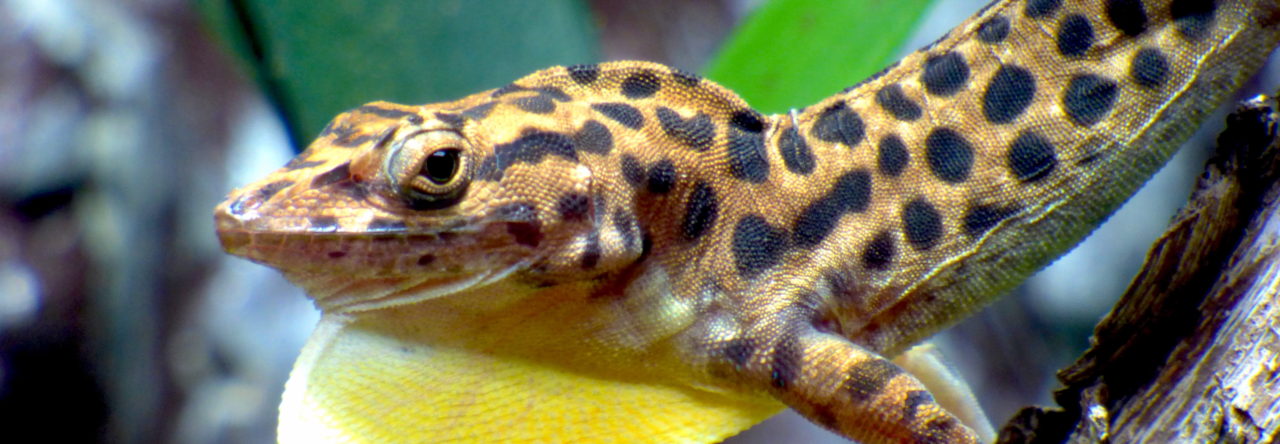
Photo: Chase G Mayers, iNaturalist
On the island of Puerto Rico this trunk-crown anole is locally called lagartijo manchando, but is also known as: the Puerto Rican spotted anole, spotted anole, banded anole, saddled anole, salmon lizard, barred anole, St. Thomas anole and chameleon.
They are possibly the most abundant anole in Puerto Rico but can also be found on the British Virgin Islands and US Virgin Islands. They can be spotted in a number of different habitats including urban environments, though they occupy buildings at a lower frequency than Anolis cristatellus. In Puerto Rico they can often be found in Tabonuco trees.

Photo: Steve Maldonado Silvestrini, iNaturalist
Spotted anoles are active foragers with an apparent preference for ants.
Males have an SVL of 40-44mm, and females an average of 46mm. They have large orange dewlaps that fade into yellow closer to the margins but female dewlaps are smaller and grey with orange near the throat. Spotted anoles are typically brown or pale gray with pale and dark coloured spots along its body. Unlike some of the anoles found in Puerto Rico, they don’t permanent crests but have a nuchal crest that they raise during antagonistic interactions and otherwise ridges down their backs. There is also a patch behind their eyes that darkens during these interactions as well, much like in Green anoles.

Photo: larsonek, iNaturalist
- #DidYouAnole – Anolis allogus - December 24, 2021
- #DidYouAnole – Anolis gundlachi - November 12, 2021
- #DidYouAnole – Anolis phyllorhinus - November 5, 2021


Leave a Reply